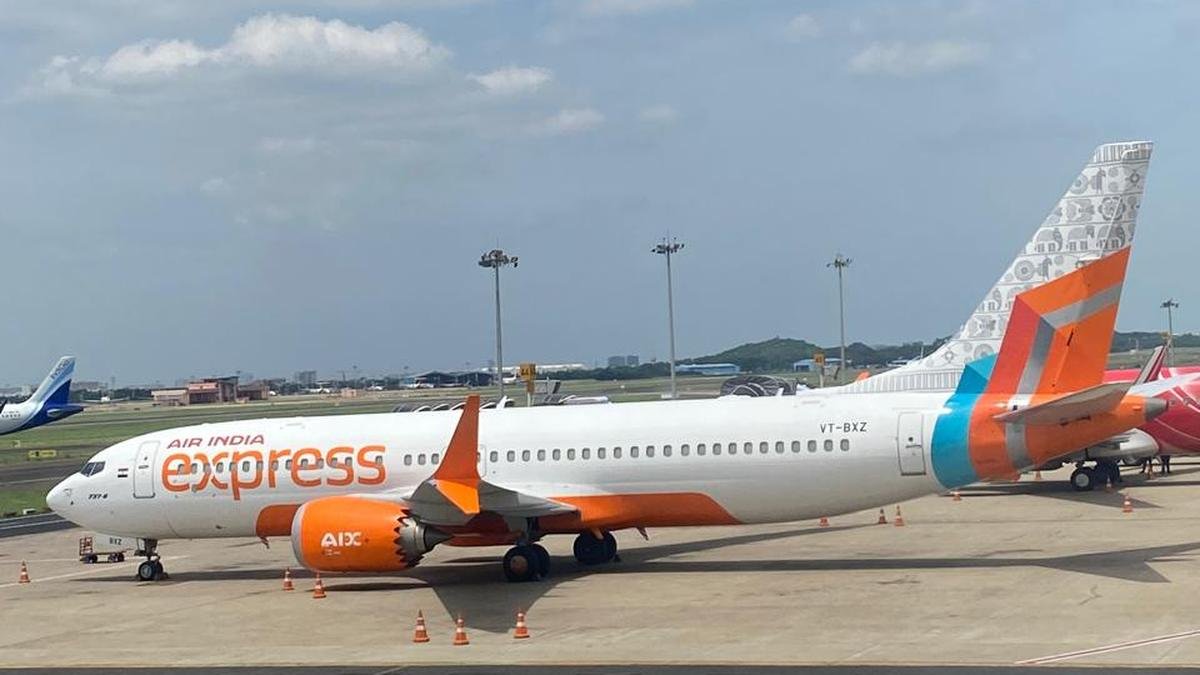Introduction
Trichy Airport, officially known as Tiruchirappalli International Airport, is a significant air travel hub located in Tamil Nadu, India. Known for its growing passenger traffic and strategic location, the airport recently made headlines due to a mid-air emergency involving an Air India Express flight. The incident, which occurred on a flight en route to Sharjah, showcased the airport’s preparedness and the pilots’ expertise in handling a potentially dangerous situation.
The Incident Overview
On a Friday evening, Air India Express Flight AXB 613 took off from Trichy Airport at 5:40 PM, heading towards Sharjah. Shortly after takeoff, the Boeing 737-800 aircraft experienced a hydraulic system issue, which triggered an alert in the cockpit. The problem was detected as oil had drained out of the hydraulic system that controls the landing gear, causing concern among the flight crew. Although the incident may have caused panic on the ground, the pilots remained calm and took immediate action to ensure the safety of the passengers and crew.
Also Read: Ratan Tata: A Visionary Leader and Philanthropist
The Role of Hydraulic Systems in Aircraft
Hydraulic systems are critical components in modern aircraft, responsible for controlling various functions such as landing gear, flight controls, and brakes. In the case of Flight AXB 613, the problem was specifically with the hydraulic system that managed the landing gear. When the landing gear was retracted after takeoff, the cockpit master caution alert was triggered, indicating a malfunction. This scenario presented a challenge as the aircraft needed to ensure a safe landing despite the hydraulic issue.
Actions Taken by the Pilots
Decision to Return to Trichy
The pilots immediately decided to return to Trichy Airport rather than continue to Sharjah, considering the potential risks associated with a hydraulic failure. The decision to bring the plane back was made with safety in mind. As an emergency landing at a distant airport could have further complicated the situation. By returning to the airport from which the aircraft departed. The pilots ensured that emergency services and the ground crew were well-prepared to handle the situation.
Managing Fuel Levels
One of the key considerations in making an emergency landing is the aircraft’s weight. Particularly when it is fully loaded with fuel. To avoid an overweight landing, which could pose additional risks. The pilots chose to maintain a holding pattern over Trichy for over two hours. This holding pattern allowed the aircraft to burn off excess fuel, thus reducing its weight to an acceptable level for landing. The pilots’ decision to follow this procedure demonstrated their commitment to ensuring the safest possible outcome for the flight.
Emergency Preparedness at Trichy Airport
Ground Preparations
While the aircraft circled overhead, Trichy Airport was bustling with emergency preparations. According to Airport Director Gopalakrishnan, the airport deployed 20 ambulances and 18 fire engines to handle any potential crisis. The Civil Aviation Minister, Ram Mohan Naidu, also instructed officials to remain on high alert. With the aviation regulator Directorate General of Civil Aviation (DGCA) coordinating the efforts.
Ensuring a Safe Landing
With preparations in place on the ground, the pilots manually deployed the landing gear and successfully locked it into position on the first attempt. This allowed the aircraft to approach the runway for a normal landing. Despite the potential risks, the plane touched down safely at Trichy Airport at approximately 8:15 PM. Nearly three hours after takeoff. The passengers were unharmed, and the emergency response demonstrated the effectiveness of the airport’s preparedness plans.
Response from Air India Express
Clarifying the Situation
In the aftermath of the incident, an Air India Express spokesperson stated that no emergency had been officially declared by the flight crew. Instead, the aircraft followed standard precautionary measures to reduce fuel and weight before attempting a landing. The airline assured the public that the situation was under control and that passenger safety was their primary concern.
Investigation and Next Steps
The airline confirmed that the cause of the hydraulic system failure would be thoroughly investigated to prevent similar occurrences in the future. Additionally, an alternative aircraft was arranged for passengers to continue their journey to Sharjah, minimizing the inconvenience caused by the delay.
Trichy Airport’s Role in Emergency Situations
Trichy Airport has a history of handling various emergency scenarios with efficiency and professionalism. This incident highlights the airport’s capability to manage emergencies and the importance of its location in southern India. As a growing international airport, Trichy has increasingly become a critical hub for passengers traveling to the Middle East and Southeast Asia.
Infrastructure and Facilities
Trichy Airport is equipped with essential facilities to handle emergency landings, including fire and rescue services. Medical assistance, and security personnel. The airport’s infrastructure is designed to support both domestic and international flights, and its staff is train to manage emergency situations effectively.
Importance of Pilot Training in Handling Emergencies
The successful handling of Flight AXB 613’s emergency demonstrates the vital role of pilot training in managing in-flight incidents. Pilots undergo extensive training to deal with a wide range of potential scenarios, from mechanical failures to adverse weather conditions. In this case, the pilots’ decision-making skills, knowledge of the aircraft’s systems, and adherence to standard operating procedures ensured that a potentially dangerous situation was brought under control.
Redundancy Systems in Aircraft
Modern aircraft, such as the Boeing 737-800, are equipped with redundancy systems to ensure continu safe operation even in the event of a system failure. The multiple hydraulic systems on the aircraft allowed the pilots to manually deploy the landing gear, despite the initial issue. These built-in redundancies are essential for enhancing the safety and reliability of air travel.
Trichy Airport’s Future Development Plans
Trichy Airport is undergoing expansion to accommodate the increasing number of passengers and larger aircraft. The development projects include runway extensions, a new terminal building, and upgraded facilities to meet international standards. These improvements aim to enhance the airport’s ability to handle emergencies and increase its overall capacity.
Expanding International Connectivity
With the expansion plans underway, Trichy Airport is expected to increase its international flight connections. Further establishing itself as a key gateway in Tamil Nadu. The airport already serves flights to destinations in the Middle East, Southeast Asia, and other regions, and the infrastructure upgrades will enable it to attract more airlines and routes.
Also Read: RIP Ratan Tata: Amit Shah to Attend Industrialist’s Funeral in Worli, PM Modi Dials Noel Tata
Conclusion
The mid-air incident involving Flight AXB 613 highlighted the professionalism and preparedness of Trichy Airport’s emergency response team and the competence of the Air India Express pilots. The situation, while concerning, was manag with precision, ensuring the safety of all passengers and crew on board. As Trichy Airport continues to grow and expand, its role as a reliable international airport will undoubtedly strengthen. Providing essential services to the region and enhancing air travel safety standards.
The incident serves as a reminder of the importance of emergency preparedness, pilot training, and advanced aircraft systems in ensuring the safety and efficiency of air travel. Trichy Airport’s response showcased the value of coordinated efforts between the airline. Airport authorities, and regulatory bodies in managing emergencies and protecting lives.





